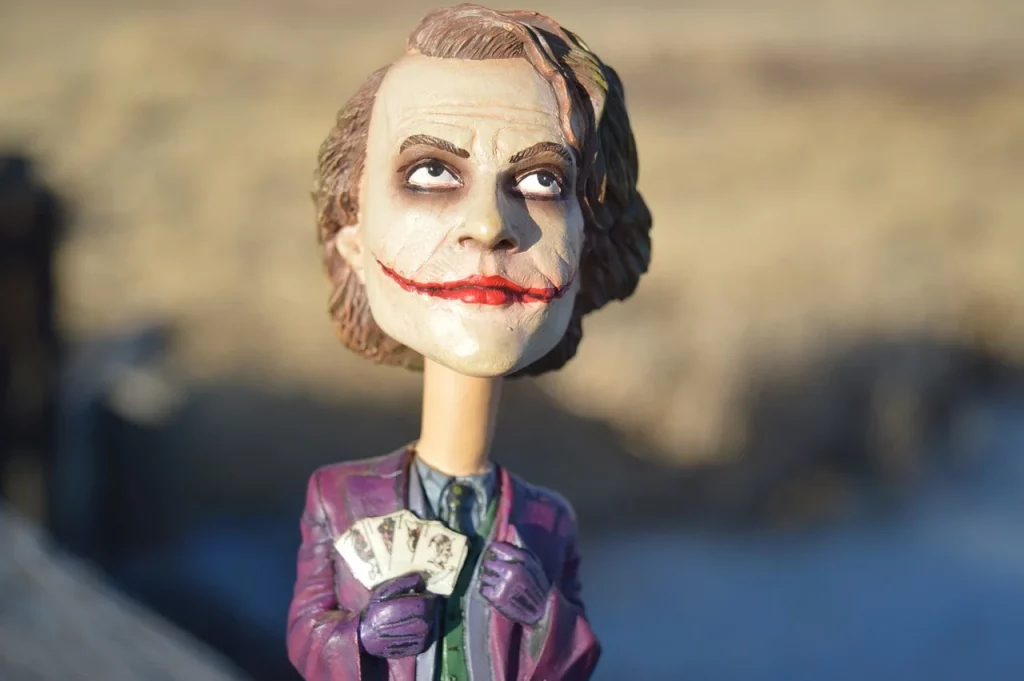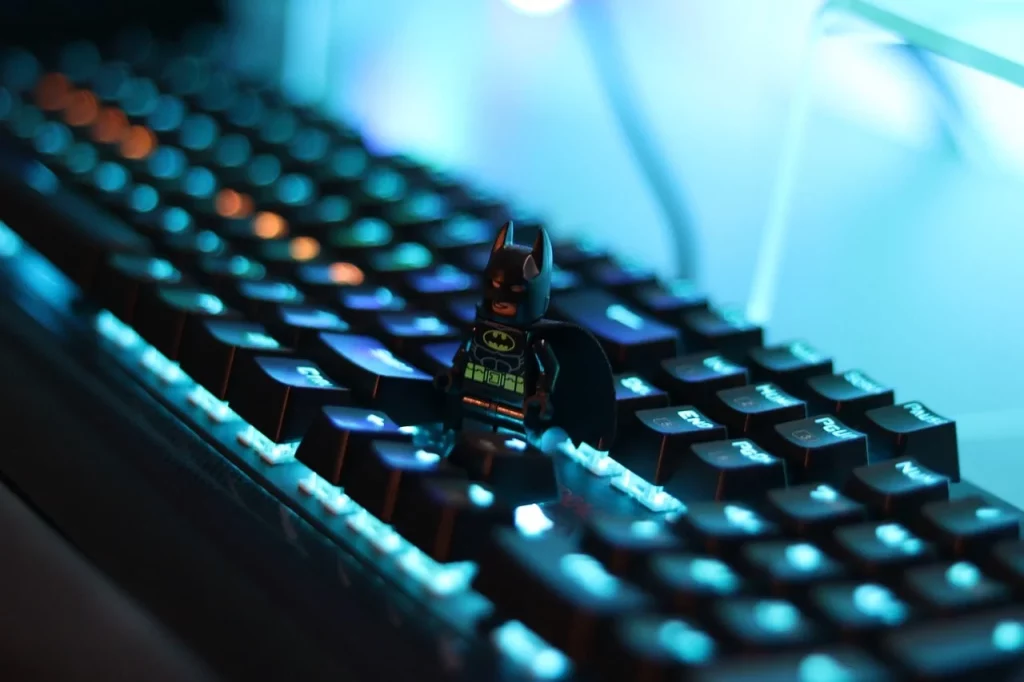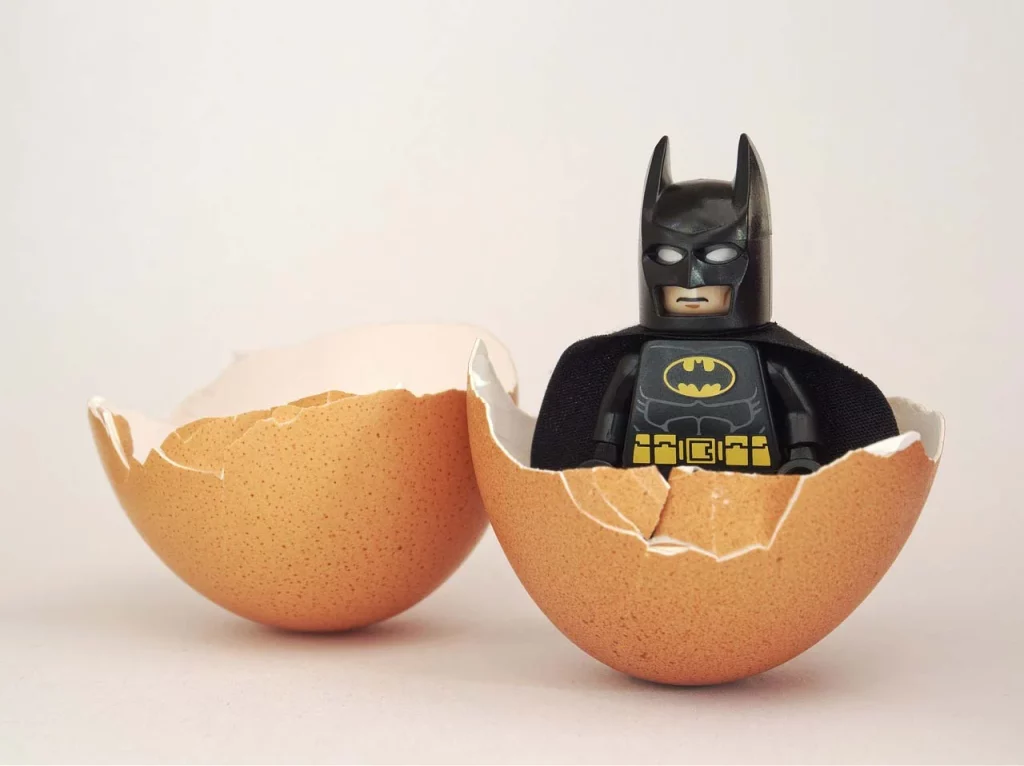A billionaire by day and a vigilante by night. No, we’re not talking about your eccentric uncle’s secret life; we’re diving into the world of Batman. This article will shine the Bat-Signal on some facts about Gotham’s dark knight that you probably didn’t know.
From his mysterious debut in comic books to the evolution of his bat-suit, there’s a lot to explore. For instance, did you ever wonder how Batman manages to keep his identity a secret? It’s not just the mask; it’s his unmatched ability to blend into the shadows.
And let’s not forget, he’s one of the few superheroes who doesn’t possess any superpowers. His real power? An unlimited data plan to Google anything faster than you can say “Batcomputer.” Ready to leap into the Batmobile and uncover the secrets?
I am vengeance, I am the night, I am Batman!
Kevin Conroy
Batman Facts
Dive into the shadowy world of Gotham’s caped crusader with the intriguing facts ahead. Stay sharp and read carefully—there’s a quiz at the end to prove your expertise on Batman.
- The original concept for this iconic character envisioned him with blonde hair and a red suit.
- Gotham City was inspired by New York City at night, according to early comic creators.
- The symbol on his chest has undergone numerous redesigns, initially starting as a simple bat silhouette without the now-famous oval background.
- Contrary to popular belief, he doesn’t always work alone; over the years, he has been a founding member of several groups, including the Justice League.
- The character’s co-creator, Bob Kane, noted that the name Bruce Wayne was derived from Robert the Bruce and Mad Anthony Wayne, highlighting historical influences.
- His first-ever comic book appearance wasn’t in his own title but in Detective Comics #27, released in 1939.
- A lesser-known fact is that his cape was inspired by Leonardo da Vinci’s sketches of a flying machine.
- The infamous utility belt was not part of his original design; it was introduced later to justify how he carried his gadgets.
- The no-kill policy was instituted as a direct response to criticisms of comic book violence in the 1950s.
- The Batmobile, one of the most iconic vehicles in popular culture, was initially a red sedan before evolving into the high-tech car we know today.
- In the 1950s, to combat accusations of homosexuality between him and Robin, the character Kathy Kane, also known as Batwoman, was introduced.
- The 1960s television series, starring Adam West, played a crucial role in popularizing the character beyond comic book readers.
- Frank Miller’s “The Dark Knight Returns” (1986) is credited with revitalizing the character with a darker and more serious tone.

- The character has a fear of bats, which is ironically the symbol he chooses to embody to instill fear into the hearts of criminals.
- His sidekick, Robin, was introduced in 1940 to attract younger readers to the comic series.
- In an alternate universe storyline, he is a Green Lantern, wielding the power ring with his strong willpower.
- His famous no-kill rule has been bent or outright broken in various comic book stories and alternate realities.
- Alfred Pennyworth, his loyal butler, was originally portrayed as a bumbling comic relief character before evolving into a wise and fatherly figure.
- The character’s parents, Thomas and Martha Wayne, were first named in Detective Comics #33 (November 1939).
- His nemesis, the Joker, was originally intended to be killed off in his first appearance but was saved by the editor, leading to one of the greatest rivalries in comic book history.
- Arkham Asylum, the infamous psychiatric hospital, is named after the fictional town in H.P. Lovecraft’s stories, a nod to the character’s dark and eerie atmosphere.
- The character’s influence extends beyond comics into psychology, with a psychological disorder named “Batman Complex” describing people who believe they must seek vengeance.
- Despite being a master detective, his secret identity has been discovered by several of his allies and enemies over the years.
- He once wielded the power of a New God, using a device called the “Hellbat” suit to fight in the realm of Apokolips.
- The first graphic novel featuring the character, “Batman: Son of the Demon” (1987), was a major success, blending comic storytelling with more sophisticated narrative techniques.
- A pivotal moment in the character’s history was the back-breaking defeat by Bane in the “Knightfall” storyline, which led to him temporarily being replaced as Batman.
- The “Bat-Signal” is not just a call for help but also a psychological tactic to spread fear among Gotham’s criminals.
- He has a contingency plan to incapacitate or even kill other members of the Justice League should they go rogue or be mind-controlled.

- His martial arts skills are so advanced, he has mastered 127 different styles, making him one of the best hand-to-hand combatants in the DC Universe.
- The character was directly inspired by two popular figures from the 1930s: Zorro and a Leonardo da Vinci sketch of a man using bat-like wings.
- He has been portrayed by more than eight actors in live-action films, each bringing a unique interpretation to the character.
- The Wayne Foundation, established by him in the comics, focuses on charity work for Gotham, especially for orphans and those affected by crime.
- His first animated appearance was in the 1968 filmation series “The Batman/Superman Hour.“
- In an unexpected crossover, he once fought against the Predator in a comic book miniseries, showcasing his ability to take on opponents beyond Gotham’s usual gallery of rogues.
- He was the first superhero to earn his own standalone live-action movie in 1989, directed by Tim Burton, which was a blockbuster hit.
- The character’s silhouette is so iconic that it’s been used in protest art and political movements around the world as a symbol of resistance against injustice.
- In an unusual team-up, he once partnered with Elmer Fudd in a special crossover comic, blending the worlds of DC and Looney Tunes.
- The “Court of Owls” storyline introduced a secret society that has been controlling Gotham from the shadows for centuries, adding depth to the city’s lore.

- The psychological depth of Bruce Wayne’s character has been explored in various comics, highlighting the trauma and obsession driving his crusade against crime.
- The Batcave, his secret headquarters, was originally just a simple basement before evolving into the elaborate underground complex known to fans today.
- One of the lesser-known gadgets in his arsenal is a kryptonite ring, kept in case he ever needs to confront Superman.
- Despite his grim persona, he has displayed a dry wit and a sense of humor, especially in interactions with his allies.
- He once served on the jury of a trial where Mr. Freeze was the defendant, showcasing his commitment to justice beyond just vigilante action.
- In the “Elseworlds” series, various stories explore alternate versions of the character, including a vampire Batman and a medieval Dark Knight.
- The impact of the character extends into academic fields, with courses and lectures analyzing his psychological complexity and ethical dilemmas.
- His legacy includes not just a vast array of comic books but also critical acclaim for animated series, video games, and merchandise, solidifying his status as a cultural icon.
- Despite his tech-savvy image, one storyline reveals he has a contingency plan that reverts Gotham back to the steam age to combat a technologically superior foe.
- The character once wielded the power of the Speed Force, granting him superhuman speed comparable to that of The Flash in a special crossover event.
- His detective skills are so renowned that he’s been called the “World’s Greatest Detective,” a nod to his intellectual prowess and analytical abilities.
- In a testament to his enduring popularity, a letter from him was included aboard the Voyager spacecraft as a symbol of human creativity and justice.
Batman Myths

As we transition from the facts, let’s now dive into the realm of the myths. We’re about to explore and distinguish between what’s true and what’s purely the stuff of legend surrounding Batman.
- Batman Works Alone
In reality, he is often depicted as a lone vigilante, but he’s actually far from it. Over the years, numerous allies have been gathered by him, including Robin, Batgirl, and even the broader Justice League. This network of support plays a crucial role in his war against crime. - Batman Has No Superpowers
While it’s true that he possesses no innate superhuman abilities, his peak physical conditioning, unparalleled martial arts skills, and detective prowess are often overlooked. These abilities, honed through years of rigorous training and discipline, allow him to stand shoulder to shoulder with other superheroes. - Batman Always Follows a Strict No-Kill Rule
Although he is renowned for his moral stance against killing, there have been instances where this rule has been bent or directly contradicted, especially in his early appearances and various alternate storylines. The character’s approach to justice is complex and sometimes contradictory. - Bruce Wayne Is Batman’s Disguise
Many believe Bruce Wayne serves merely as a mask for the vigilante. However, the truth is more nuanced. The roles of Bruce Wayne and Batman are both integral to his identity, with each aspect reflecting different facets of his complex persona and mission. - Batman Is Always Grim and Brooding
While he is often portrayed as a dark, brooding character, there’s a lighter side to him that has been explored in various comics and adaptations. Humor, compassion, and moments of light-heartedness have been displayed by him, showing a more balanced and human side to the Dark Knight.
No products found.
Batman Quotes

Let’s hear some quotes from comic book creators, actors who brought him to life, and even everyday fans, all offering their unique perspective on the Dark Knight.
It’s not who I am underneath, but what I do that defines me.
Christian Bale
Christian Bale, as Batman, declares this powerful statement in “Batman Begins,” highlighting actions over identity.
The night is darkest just before the dawn. And I promise you, the dawn is coming.
Harvey Dent (Aaron Eckhart)
Aaron Eckhart, portraying Harvey Dent in “The Dark Knight,” uses this quote to symbolize hope amidst despair, a theme closely associated with Batman’s struggle.
You either die a hero or live long enough to see yourself become the villain.
Harvey Dent (Aaron Eckhart)
Another memorable line from Aaron Eckhart’s Harvey Dent in “The Dark Knight” captures the tragic potential of heroism’s corruption over time.
I wear a mask. And that mask, it’s not to hide who I am, but to create what I am.
Batman (Comics)
This quote from the Batman comics reflects on the significance of Batman’s persona, emphasizing the creation of a symbol beyond the man Bruce Wayne.
Why do we fall? So we can learn to pick ourselves back up.
Thomas Wayne
Thomas Wayne imparts this wisdom to a young Bruce Wayne in “Batman Begins,” a line that encapsulates the enduring spirit of resilience and redemption, core to Batman’s character.
Batman FAQ

We transition from the insightful world of Batman through quotes, and we approach the final stretch before the trivia. Pay close attention to this FAQ section; it will fine-tune your understanding and prepare you for the quiz.
- Why do Batman and Superman fight?
Batman and Superman have had their differences and have fought for various reasons over the years. One common theme is their conflicting ideologies: Batman operates in a more pragmatic and sometimes darker manner, focusing on the grim reality of crime in Gotham City. Superman, on the other hand, represents hope and works with a belief in the inherent goodness of people. - How did Batman get his voice?
Batman, or Bruce Wayne, alters his voice when he dons the Batsuit as a way to conceal his true identity and to instill fear in the hearts of criminals. The “Batman voice” is deliberately made gruffer and more intimidating. Actors portraying him have interpreted this in various ways, from using a voice modulator in some adaptations to physically altering their voice in others. - Can Batman fly?
He cannot fly in the same way characters like Superman can, as he does not have any superpowers. However, he often uses his intellect, technology, and resources to mimic flight. With the aid of his cape, which can harden to act as a glider, and grappling hooks, he can glide over Gotham City to quickly move from place to place or surprise his enemies. - Are Batman and the Joker brothers?
There is no canonical evidence in the main comic storylines to suggest that Batman and the Joker are brothers. The idea has been explored in alternative storylines and speculative theories, but in the core Batman narrative, they are not related. Their relationship is more deeply rooted in their contrasting views of the world, making them archenemies. - How did Batman become Batman?
Bruce Wayne became Batman after witnessing the murder of his parents, Thomas and Martha Wayne, in a mugging gone wrong when he was just a child. This traumatic event deeply affected him, leading him to swear an oath to spend his life fighting crime so that no other child would have to endure the same pain. He trained physically and intellectually, harnessing his fear (notably of bats) to create the Batman persona, a symbol meant to strike fear into the hearts of Gotham’s criminals.
No products found.
Batman Trivia

Welcome to the ultimate Batman quiz! Warning: failing to answer correctly might result in being bat-summoned to Gotham for a personal Robin training session… in wearing tights.
Conclusion
Bruce Wayne, despite his billionaire status, chooses to confront Gotham’s darkness, not with his wealth but with his wits and physical prowess. This duality of character—of vulnerability and strength—makes Batman eternally compelling.
He’s a reminder that heroes are not born from their abilities but from their choices to stand up against adversity. His legacy is not just in the enemies he’s defeated, but in the hope he inspires. In every storyline and every adaptation, Batman shows us the power of human will. Till next time, stay curious. Cheers.
2 Sources Used For This Article

